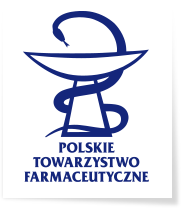Dominika Krzysztofik, Monika Marcinkowska, Marcin Kołaczkowski
Carbon Monoxide in Medicine: Emerging Therapeutic Perspectives
2025-05-16
Research subject. This study is devoted to the analysis of literature concerning the therapeutic applications of carbon monoxide. Carbon monoxide (CO), traditionally regarded as a toxic gas, is now recognized for its potential therapeutic applications. Its endogenous production in the human body underscores a physiological role in cellular signaling and homeostasis. The diverse biological properties of CO have driven early investigations to validate its therapeutic capacity and potential uses in treating a range of disorders.
Objective of the Research. This study aims to present the current state of knowledge on the therapeutic applications of carbon monoxide, including its use in inhalation therapies and a review of modern chemical compounds referred to as CO donors.
Materials and Methods. A literature review was conducted by examining research papers published between 2015 and 2025, accessed through databases such as PubMed, PubChem, Google Scholar, Wiley Online Library, and Web of Science. Keywords used included “carbon monoxide”, “carbon monoxide releasing molecules (CORMs)”, “CO donors”, “therapeutic use of carbon monoxide”, “organic CORMs”, and “metal-free CORMs”.
Results. The reviewed literature demonstrates that CO possesses diverse therapeutic properties, including anti-inflammatory, cytoprotective, immunomodulatory, and anti-proliferative. Early clinical investigations into carbon monoxide-based therapies primarily focused on controlled inhalation, however, this approach presents significant challenges, particularly in dose optimization and the lack of correlation between systemic carboxyhemoglobin (COHb) concentrations and therapeutic outcomes. Preclinical studies indicate that the efficacy of carbon monoxide may be more closely linked to its local tissue concentration rather than circulating carboxyhemoglobin concentrations. To overcome the limitations of inhaled carbon monoxide administration, an alternative strategy involves the use of carbon monoxide-releasing molecules (CORMs), which operate as prodrugs, releasing carbon monoxide in response to specific stimuli such as changes in pH, temperature, enzymatic activity, or light exposure. Experimental studies demonstrate that CORMs exhibit high pharmacological efficacy with an improved safety profile. Notably, oral administration of carbon monoxide donors has shown promising results in preclinical models of gastrointestinal disorders, where they mediate cytoprotection and inflammation resolution.
Conclusions. Despite these advances, further research is required to optimize the pharmacokinetic and pharmacodynamic properties of carbon monoxide donors, facilitating their translation into clinical applications. In particular, the development of orally bioavailable CO donors holds promise for advancing therapeutic strategies based on carbon monoxide and establishing novel treatment opportunities for inflammatory and degenerative disorders.
Keywords: Carbon monoxide, CORMs, organic CORMs, CO delivery technologies, CORMs prodrug.
© Farm Pol, 2024, 80(11): 787–800

